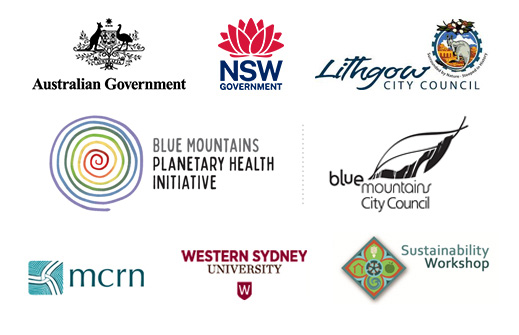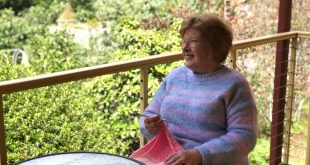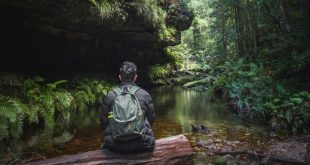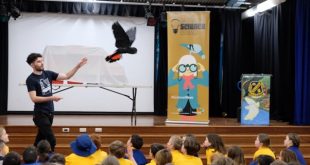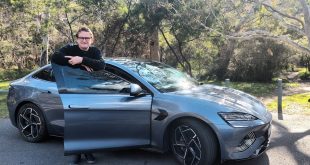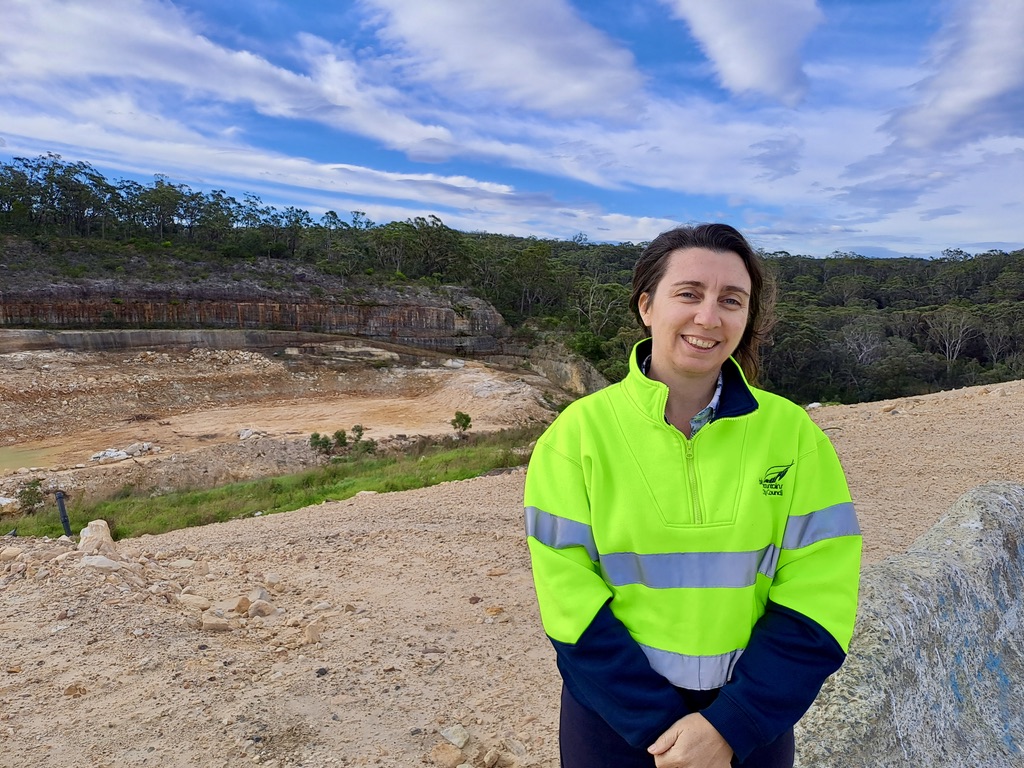
Rebecca Tempest on top of the landfill platform at the Blaxland Resource Recovery and Waste Management Facility. In the background is the sandstone quarry. It will be lined to become the next stage of landfill for waste to be deposited that is unable to be recycled or reused.
Story and photographs by Julie Nance
A beautiful dining table, a piano, a wooden canoe, bicycles and books – not what I expected to find at my local ‘tip’. Turning trash into treasure is just one way our Blue Mountains community is reducing materials going to landfill. In our so-called ‘throw-away society’, we are striving to become recognised for leading the transition towards a zero-waste community. I visited the Blaxland Resource Recovery and Waste Management Facility to find out about the innovations making a big difference.
It’s humbling and mind-boggling to think I’m just one of 80,000 individuals in the City of the Blue Mountains generating waste each week.
Spread over 100km, we have more than 34,000 households in 27 towns and villages relying on waste services to keep our lives in order. With the Blue Mountains being a magnet for visitors, it is predicted up to 6.6 million people will travel here by 2038, a staggering 33 per cent increase on present levels.
More people means more materials for the City to manage.
The good news is that improvements at home and in infrastructure and services, are resulting in more than half (55%) of our waste being diverted away from landfill.
We are increasingly avoiding single-use products and packaging and we’re getting better at separating our recycling and garden clippings, though food and other kitchen organics do still make it into our red bins.
The grand tour
To get a handle on how we’re managing our waste, I begin my tour of the Blaxland Resource Recovery and Waste Management Facility.
My guide is Rebecca Tempest, Blue Mountains City Council Resource Recovery and Waste Services Manager. I’m in capable hands. Rebecca has been working at the Facility for two decades after graduating in environmental science.
The first thing that catches my eye is the Reuse Shed.
I’m surprised to learn this treasure trove of free goodies has been in existence for 11 years. I discover a drummer’s starter kit, rollerblades, a football, an old-fashioned baby’s bassinette and an outdoor table!
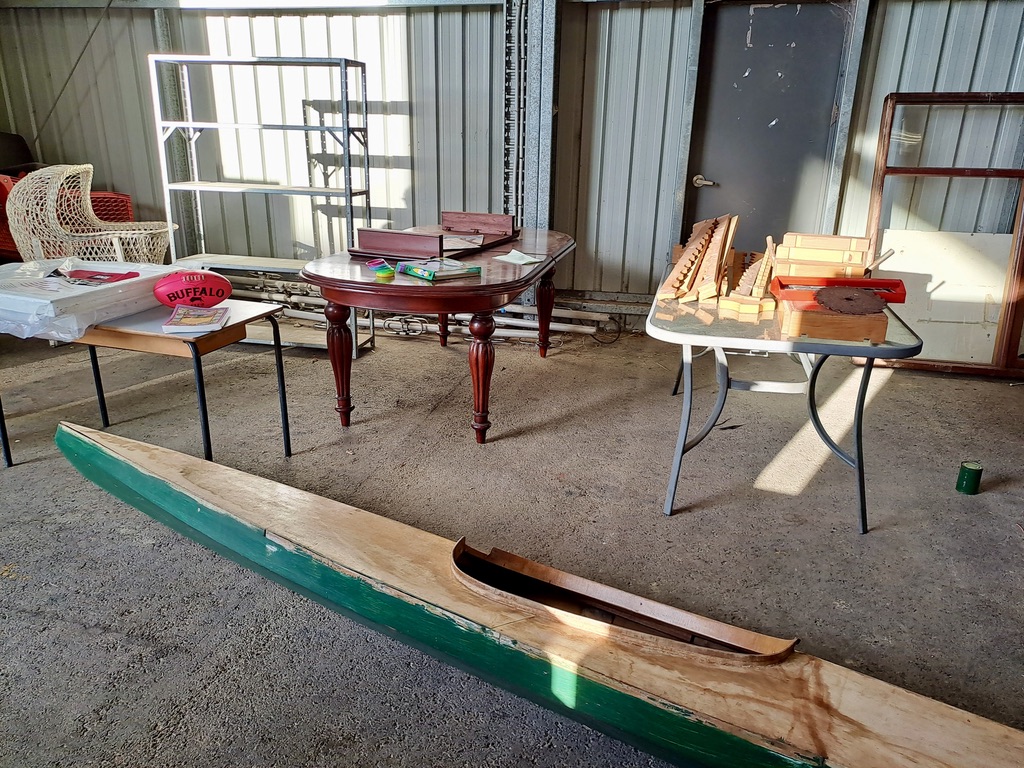
There was an eclectic array of free items on offer at the Reuse Shed during my visit.
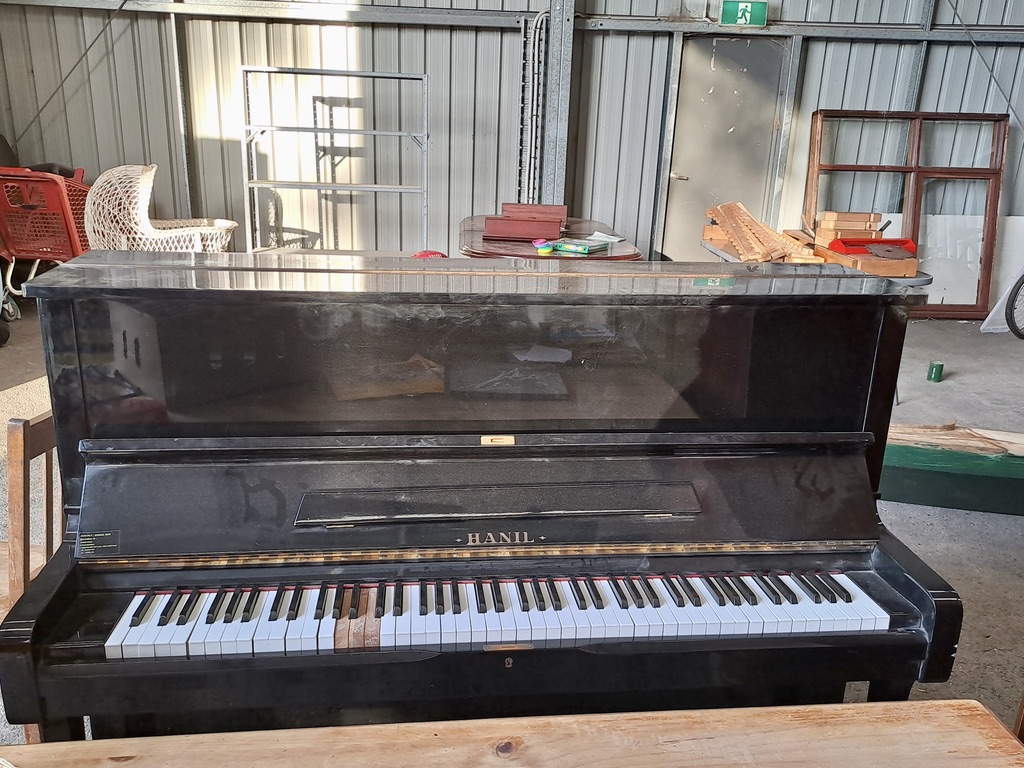
A piano ready for some TLC.
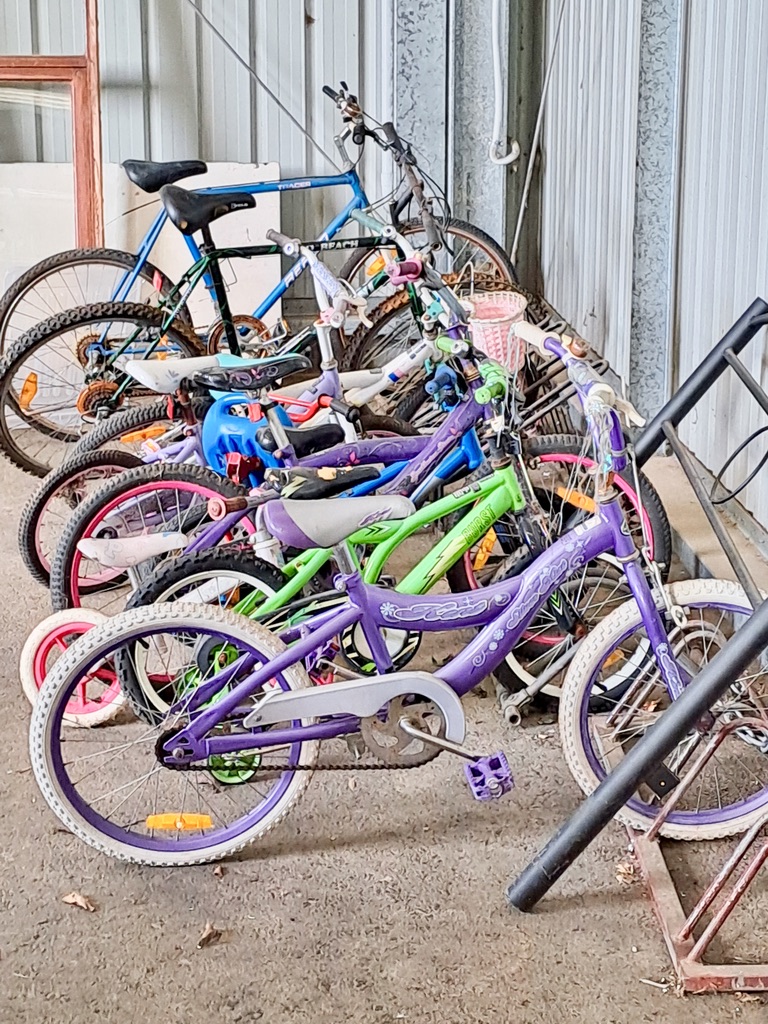
Children and adults’ bikes galore.
I bump into historical restorators Billy Gruner and Sarah Keighery who have been frequent visitors to ‘the Shed’ over the past decade.
They’ve had many memorable finds: 150-year-old cedar windows and doors to Penguin Classics for Billy’s large book collection.
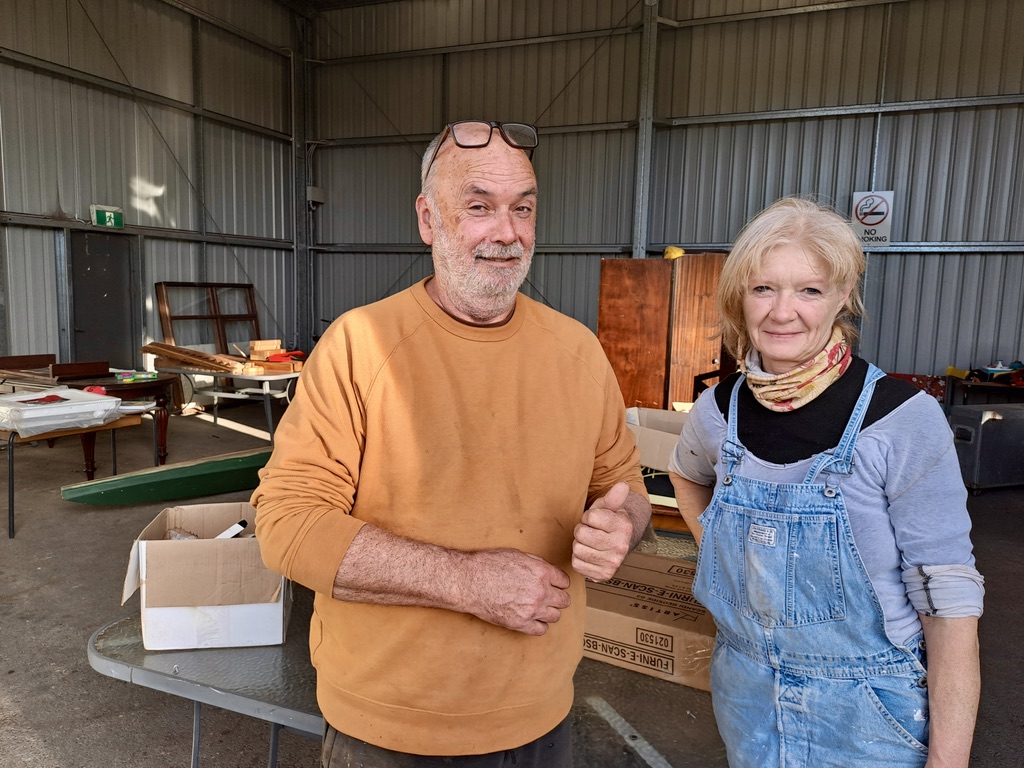
Billy Gruner and Sarah Keighery enjoy the thrill of unearthing treasures.
Billy recounts the ultimate discovery: “One day a lady pulled up with a ute full of brand new imported Italian furniture. Her mother’s designer store had closed down.
“I ended up decorating a client’s house with all that beautiful furniture and they loved it.”
The big picture
Over the next 10 years Blue Mountains City Council aims to encourage a circular economy. Sharing, leasing, reusing, repairing, refurbishing and recycling existing materials can virtually eliminate waste. Known as the ‘cradle to cradle’ model, it is set to replace the ‘cradle to grave’ linear tradition of produce-consume-dispose.
Council’s Towards Zero Waste Strategy 2022-2031 focuses on initiatives from reducing food waste, which accounts for between 6-8 per cent of global greenhouse emissions, to choosing products that can be continually reused rather than being discarded.
A positive step in creating a circular economy
The Strategy includes a clothing and textiles recycling program, recently introduced at both the Blaxland and Katoomba Resource Recovery and Waste Management facilities. According to the Australian Fashion Council, clothing waste has become one of the largest contributors to the nation’s waste problem, with more than 200,000 tonnes of clothing and textiles ending up in landfill every year.
During my tour I notice a large textiles recovery bin where clothes and accessories such as belts, hats and shoes can be deposited. We can also donate home and outdoor soft furnishings, towels, sheets, cushions and soft toys.
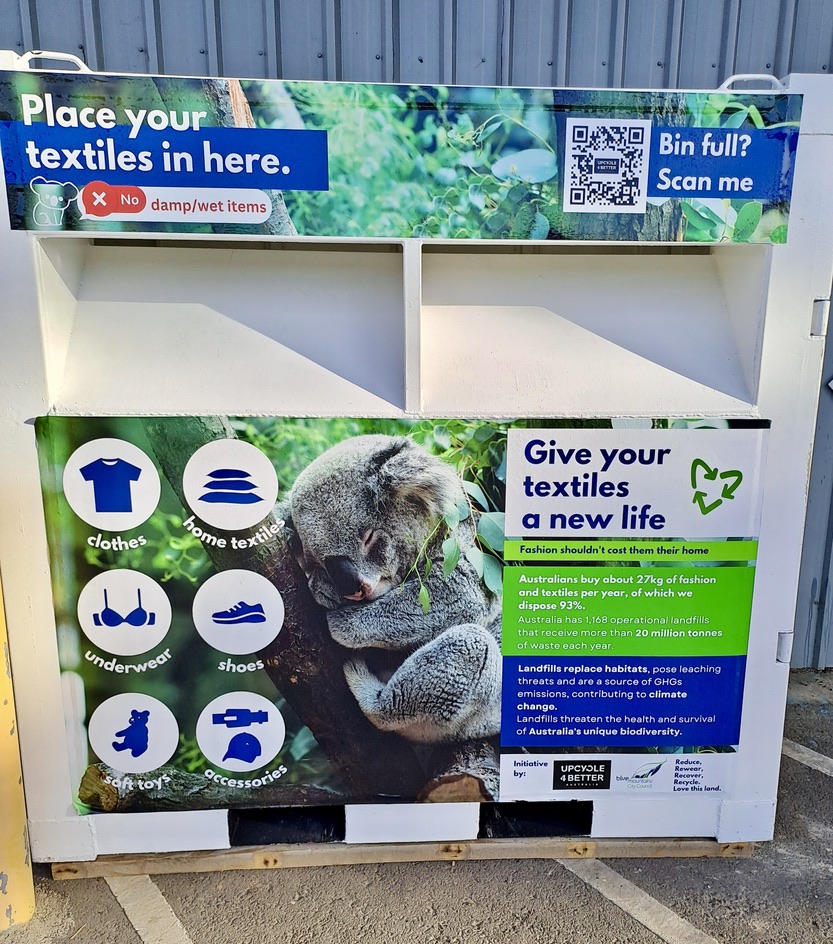
Ready for our donations – the textiles recovery bin.
Council has partnered with ‘Upcycle 4 Better’ which sells wearable clothing and items from the bin that are in good condition, using money to develop new recycling and upcycling programs in Australia and overseas.
Unwearable or unusable items are sent for repair, if possible, reprocessed as industrial cloths or recycled into products such as flooring and rugs. If items can’t be recycled, they are used as processed engineered fuel for the construction industry.
My other discoveries
Behind the textile recovery bin is a large shed with a variety of goods and materials neatly separated into different categories. It’s enlightening to find out what happens to all this ‘stuff’ (Council’s website is a good source of this information):
Mattresses: Fabric and wadding is repurposed as stuffing for things like fillers in boxing bags. The metal is recycled.
Polystyrene: The material is transferred to the Katoomba site, fed into a special machine, heated and condensed down into polystyrene ‘bricks’. This is outsourced to be recycled into insulation products and piping.
White goods including fridges and freezers: These are professionally de-gassed to prevent gas being released in an uncontrolled way and harming the ozone layer. The metal is recycled.
Hazardous waste: We can safely dispose of our household problem-waste free of charge at the Community Recycling Centre set up in 2021. This includes car and household batteries, fluorescent globes and tubes, paint, smoke detectors, gas bottles, fire extinguishers and oils.
X-ray films: I’m pleased to find out many years’ worth of X-rays taking up space in my bedroom cupboard can be brought in for recycling. Records are safely stored and confidentially destroyed. The first step is for the X-rays to be processed in a refinery to extract silver. They are then heated using temperatures of more than 1,000°C. The silver is extracted and converted into a purer form which can be reused in a range of industries such as jewellery, utensils, electrical components and film manufacture.
Electronic waste: E-waste often contains precious metals that can be recycled. I was shocked to learn that Australians generate more than 140,000 tonnes of e-waste each year much of which ends up in landfill. Some e-waste contains toxic materials such as lead, mercury and arsenic.
Over the past 20 years I’ve amassed a rather forlorn collection of old equipment including a couple of laptops, a computer tower, a printer, mobile phones and modems. For an embarrassingly long time the task of finding out how to dispose of them safely has been on my to do list.
It was a relief to discover I can bring it all to a free drop-off point at the Facility. The list of what they accept is long, including televisions, tablets, computer monitors, scanners, computer parts, mice, cables and web cameras.
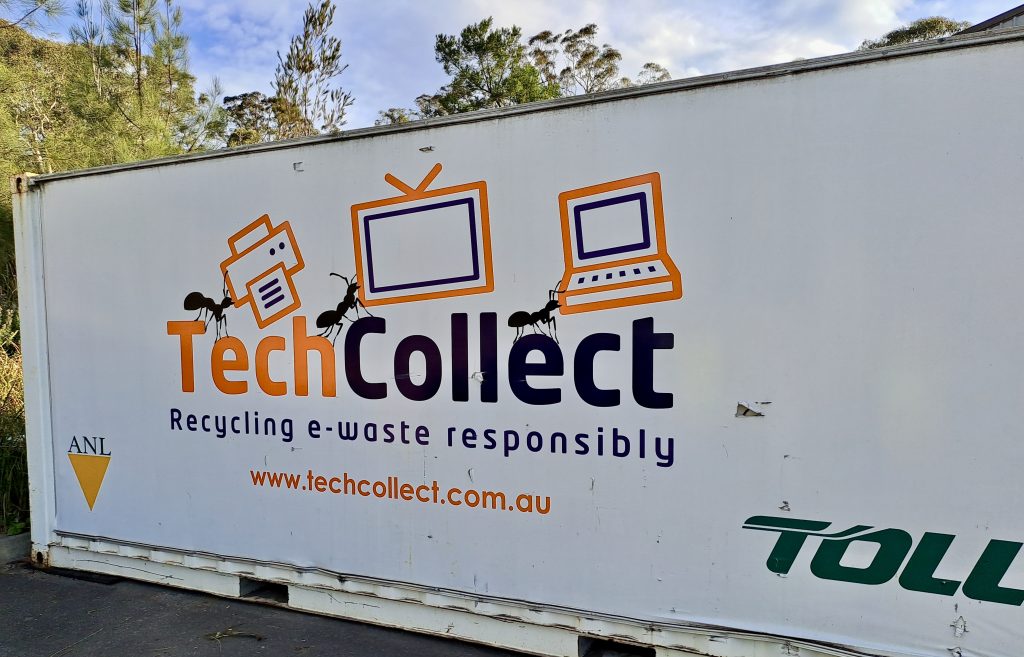
TechCollect takes care of our e-waste safely.
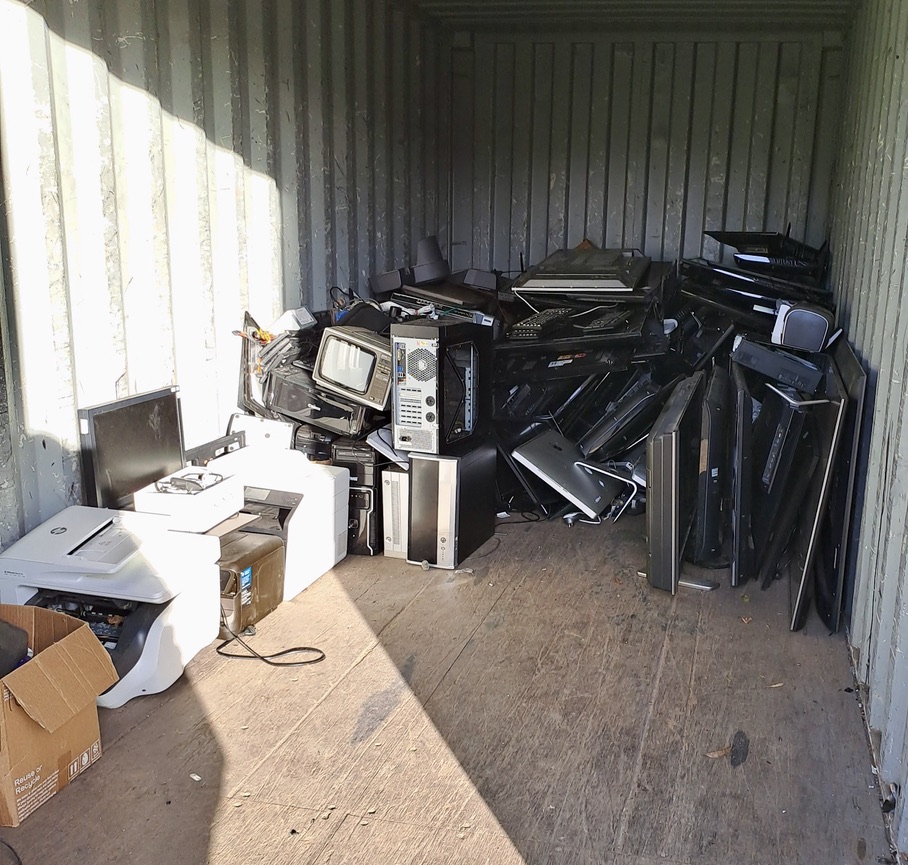
A collection of e-waste deposited by local residents and businesses in the container.
We’ve turned things around
It was sobering to read in the Towards Zero Waste Strategy that without improvements in infrastructure and services, and the commitment of residents, the city’s only landfill at Blaxland would have been full by this year!
The amount of waste going to landfill has been reduced to 24,000 tonnes per year, extending the life of the site by over a decade to 2037.
Each household generates 9.14Kg of waste each week – 16 per cent below the state average of 12.38kg.
Rebecca says it would have been a “massive expense and huge environmental impact” sending thousands of tonnes of waste elsewhere to be buried or treated.
“I’ve been watching this landfill over the 20 years I’ve been working here and it’s really exciting how many times we’ve extended the site’s life,” Rebecca says.
“Every new initiative buys us time. It might be a few months, a few years, depending on the impact of that initiative or new service.”
Rebecca explains some of the main changes embraced by the community that have had a significant effect:
- In 2008 we moved from using black crates for recycling to the yellow recycling bins. As a result, recycled material jumped from 6000 to 9000 tonnes per year. Rebecca believes a contributing factor for the “massive increase” was the easier handling of the bin versus the crate, particularly for people with mobility issues.
“There was also a reluctance from residents to put their recycling crate out in windy weather,” Rebecca says. “People were making good environmental choices to not pollute their street but it meant a lot of recycled material wasn’t being recycled as much as it could have been.”
- In 2012 a small vehicle area was introduced at the Facility, making it easy for people to pull up their vehicle and sort materials into different bays and bins. These include green waste, metal, timber, cardboard and mixed waste.
- In 2016 we saw the introduction of the green bin. Prior to that green waste such as lawn clippings and garden prunings were often put into the red bin and added to landfill.
My youngest son’s first job out of high school involved weeks on the back of a truck assembling and delivering those new bins.
Rebecca says: “That change not only contributed to our landfill capacity, it was important because organic material breaking down in landfill generates gases, mainly methane. That’s one of the strongest greenhouse gases – 26 times stronger than carbon dioxide.”
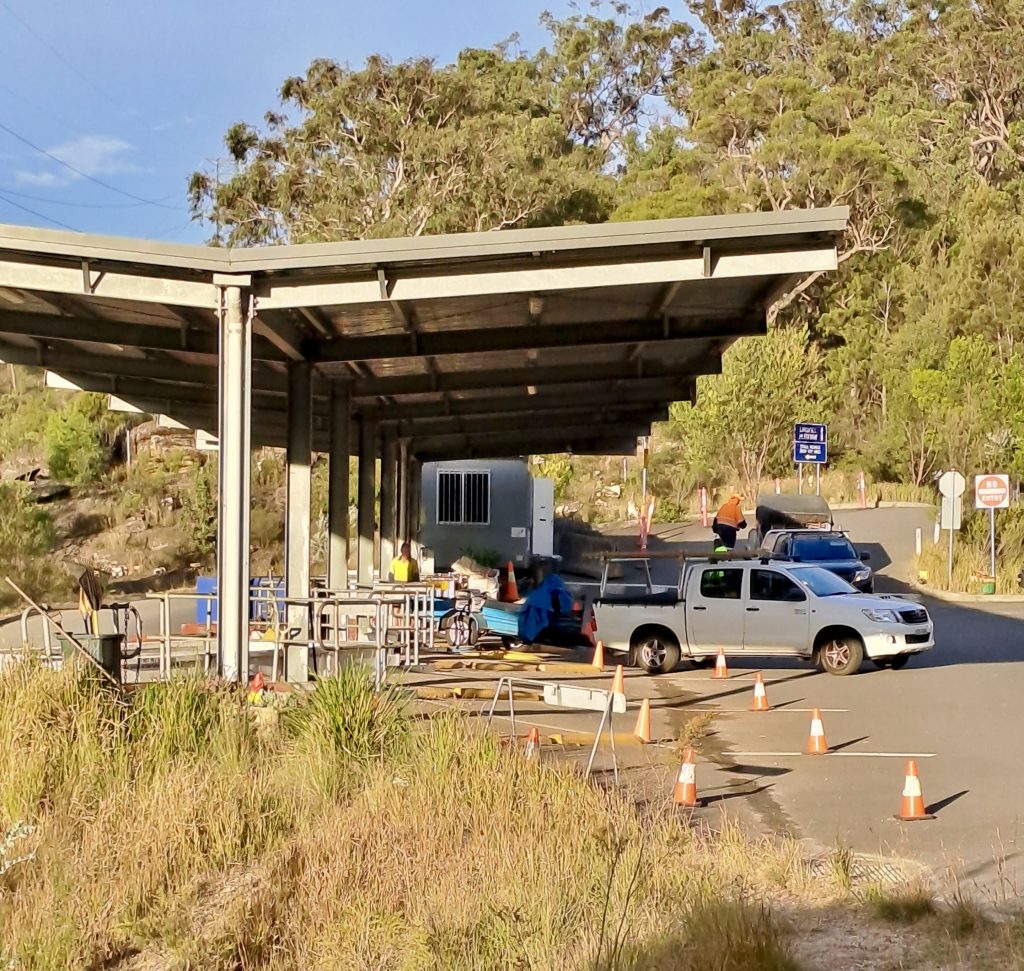
The small vehicle area makes things easier for us to reduce the amount of material going to landfill.
The landfill platform
Prior to the introduction of the small vehicle area, parting with your waste meant driving up a dirt road to the ‘landfill platform’. You’d tip the contents of your boot directly onto the landfill.
Some business customers still make the trip up that dirt road with large trailers, skip bins and trucks to unload bulky materials such as steel, timber, tyres, mattresses and green waste. The platform is also where items from twice yearly kerbside Booked Waste Service collections are deposited.
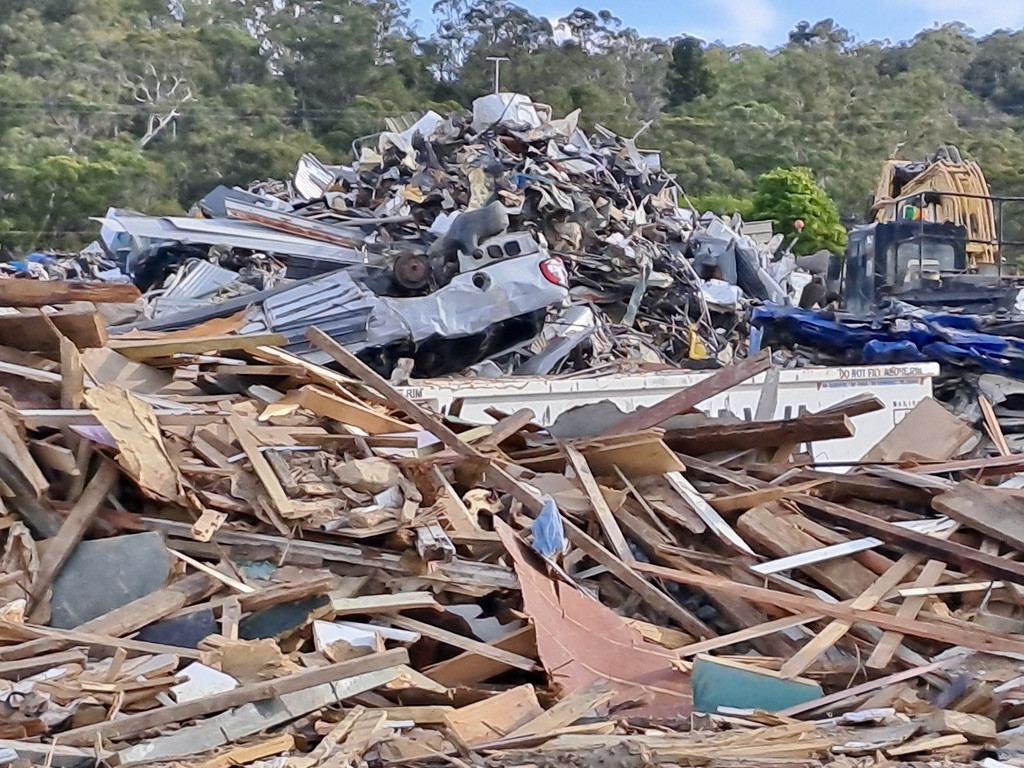
Bulky waste that has been sorted into piles of timber (foreground) and metal (rear).
I meet machine operator Danny Corney who has been expertly organising and extracting materials for recycling over the past six years. The ‘grabs’ on his excavator are so precise, he can pick up something as small as a star picket from a large pile of rubbish.
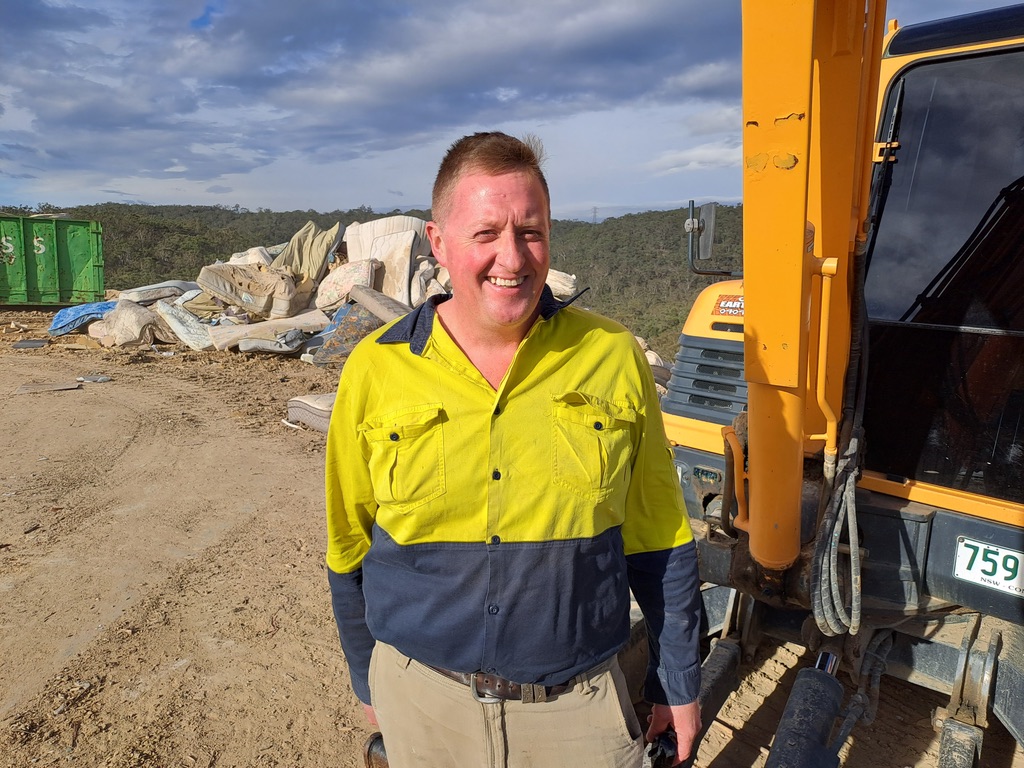
Danny Corney with mattresses in the background bound for recycling.
Danny finds it satisfying to help reduce landfill.
“Every cubic metre of waste that goes into the ground costs $500 a tonne for disposal,” he says. “When I extract timber and steel for recycling, I’m saving Council $90 a tonne.”
Rebecca adds that in addition to direct costs, the NSW Government applies a waste levy of approximately $90 per tonne that goes into landfill. “Danny’s specialist work recovers that charge,” she says.
Unrecyclable materials are deposited into the landfill encased in an environmental lining. A layer of soil is added over the top each night to stop garbage flying away, to reduce odour and to prevent vermin.
The future
While waste generation rates are lower in the Blue Mountains than state averages, the Strategy warns they are still unsustainable.
Two thirds of what goes into landfill comes from our household red bins. The highest proportion of material in that bin is food and other kitchen organics.

After the recyclable material is extracted, the remainder of this mixed waste is destined for landfill.
Blue Mountains City Council will be going to tender for a Food and Garden Organics (FOGO) service to begin in July 2026, when current contracts expire. This will be one of the most significant actions of the Strategy and an important step in transitioning our community towards zero waste and a circular economy.
Parting words
As my tour concludes, I ask Rebecca what has motivated her to keep working for so long in the world of waste.
“It’s rewarding seeing the difference made over the long term,” she says. “A lot of improvements aren’t quick fixes but the cumulative effect of each initiative and upgrade has a big impact on how well we are doing as a city.
“We need to know we are doing the best things possible to reduce what is going to landfill.”
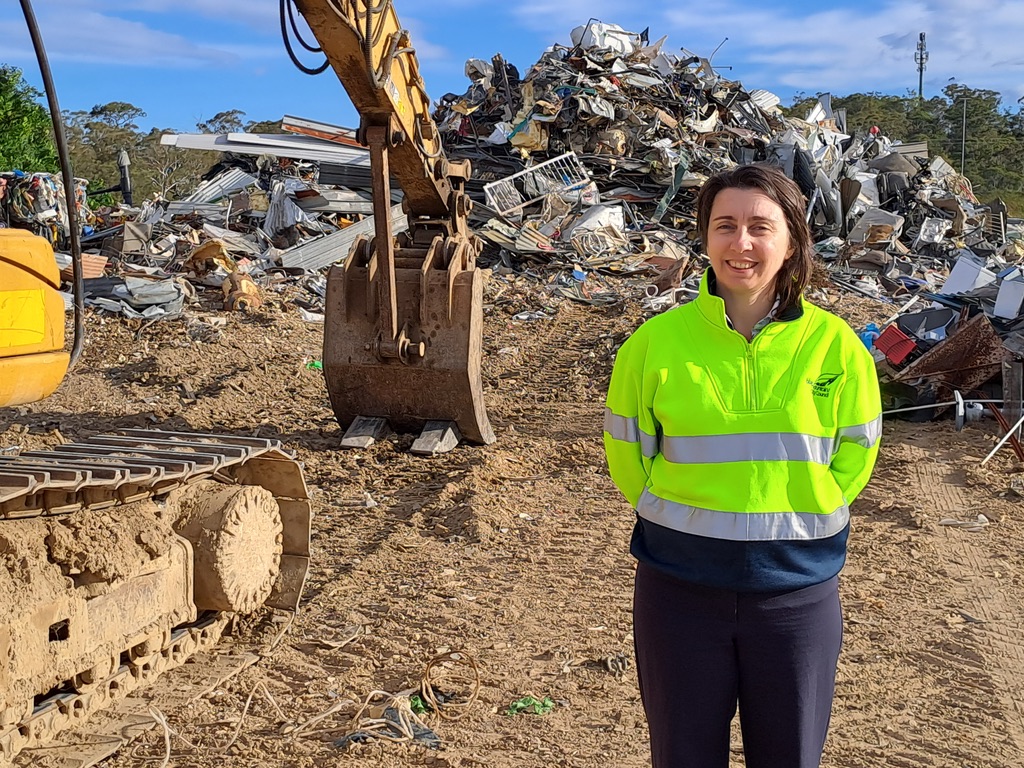
Rebecca enjoys the challenge of finding solutions to complex problems.
This story has been produced as part of a Bioregional Collaboration for Planetary Health and is supported by the Disaster Risk Reduction Fund (DRRF). The DRRF is jointly funded by the Australian and New South Wales governments.
